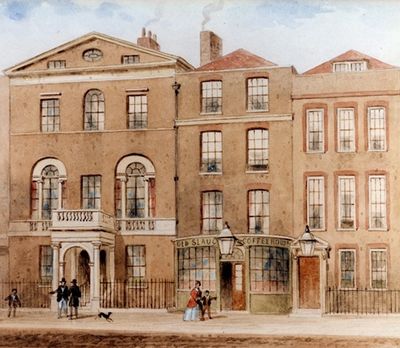Annotation:St. Martin's-Lane
X: 1 T: St. Martin's-Lane P: Longways for as many as will %R: march, reel B: "The Dancing-Master: Containing Directions and Tunes for Dancing" printed by W. Pearson for John Walsh, London ca. 1709 S: 7: DMDfD http://digital.nls.uk/special-collections-of-printed-music/pageturner.cfm?id=89751228 p.197 "S 3" Z: 2013 John Chambers <jc:trillian.mit.edu> N: Repeat added to satisfy the "first Strain played twice" instruction. M: C| L: 1/8 F:http://www.john-chambers.us/~jc/music/book/JohnWalsh/St_Martins-Lane.abc K: Gm % - - - - - - - - - - - - - - - - - - - - - - - - - Bc |\ d2 d2 d2 d2 | e4 c4 | d2 (cB) A2 d2 | B2 G2 G2 Bc |d2 d2 d2 d2 | e4 c4 | d4 cB (AB) (AG) | G6 :|ef |g2 g2 g2 d2 | e4 c4 | f2 f2 fg fe | d6 ef | g2 G2 G2 g2 | f2 F2 F2 fe | d2 e2 c3 B | B6 de |f2 f2 f2 f2 | ^f2 f2 f2 f2 |g2 g2 (g3 f/g/) | a2 a2 a2 a2 |b2 b^f g2 a2 | ^f6 ga | b2 B2 B2 b2 | a2 A2 A2 a2 |g2 G2 G2 g2 | ^f2 g2 g3 ^f | g6 |] % - - - - - - - - - - - - - - - - - - - - - - - - - %%begintext align %% The 1. man cast off below the 2. man, then turn the 3. wo. and cast up into his own place; then the 1 wo. cast off %% below the 2. wo. then turn the 3. man and cast up into her own place. This to the first Strain played twice. %% Lead down the 2. cu. then all hands a-breast with the 3. cu. and go the Figure through, then cast up all four hands %% a-breast with the 2. cu. then lead up and go the Figure through the 2. cu. then meet in the 2. cu. place and turn; the %% others do the like. %% [DMDfD] %%endtext %%sep 1 8 500

St Martin's Lane is a street in the City of Westminster, which runs from the church of St Martin-in-the-Fields, after which it is named. Until the time of James I, St. Martin's Lane was a country lane linking the churches of St. Martin-in-the-Fields and St. Giles-in-the-Fields; as such it was probably in existence at the beginning of the 13th century, and there may have been a field path there even earlier. Beginning in the early 17th century the rural location was gradually built up, with the west side inhabited by a number of famous people where there were large houses with stables and coach houses annexed to them. The east side seems to have been occupied mainly by traders and artisans. By then end of the century, when the tune was first published, the residential part of the lane seems to have become a fashionable situation for doctors and artists, such as wikipedia:William_Hogarth (1697-1764). wikipedia:Old_Slaughter's_Coffee_House on the west side of St. Martin's Lane was founded in 1692 by Thomas Slaughter and became a favorite resort of artists living in the neighborhood.

